Updated: Dec. 13, 2021: 2:09 p.m.
The richest man in the world does not own a house and has recently been selling off his fortune. He tosses satellites into orbit and harnesses the sun; he drives a car he created that uses no gas and barely needs a driver. With a flick of his finger, the stock market soars or swoons. An army of devotees hangs on his every utterance. He dreams of Mars as he bestrides Earth, square-jawed and indomitable. Lately, Elon Musk also likes to live-tweet his poops.
“Just dropping some friends off at the pool,” the 50-year-old zillionaire informed his 66 million Twitter followers on the evening of Nov. 29, having previously advised that at least half his tweets were “made on a porcelain throne.” After an interval—21 minutes, if you must know—an update: “Splish splash.”
“Sometimes I do hit some resonant notes with respect to humor,” Musk says of his puerile expressions. It’s a warm, windy December day at Starbase, his new rocket-fabrication and launch facility at the southern tip of Texas. Two of his Starship rockets—gleaming, pointy-nosed, 160-ft. stainless-steel silos—are silhouetted behind him in the setting sun. “But you know, not all jokes land.”
This is the man who aspires to save our planet and get us a new one to inhabit: clown, genius, edgelord, visionary, industrialist, showman, cad; a madcap hybrid of Thomas Edison, P.T. Barnum, Andrew Carnegie and Watchmen’s Doctor Manhattan, the brooding, blue-skinned man-god who invents electric cars and moves to Mars. His startup rocket company, SpaceX, has leapfrogged Boeing and others to own America’s spacefaring future. His car company, Tesla, controls two-thirds of the multibillion-dollar electric-vehicle market it pioneered and is valued at a cool $1 trillion. That has made Musk, with a net worth of more than $250 billion, the richest private citizen in history, at least on paper. He’s a player in robots and solar, cryptocurrency and climate, brain-computer implants to stave off the menace of artificial intelligence and underground tunnels to move people and freight at super speeds. He dominates Wall Street: “The way finance works now is that things are valuable not based on their cash flows but on their proximity to Elon Musk,” Bloomberg columnist Matt Levine wrote in February, after Musk’s “Gamestonk!!” tweet vaulted the meme-stock craze into the stratosphere.
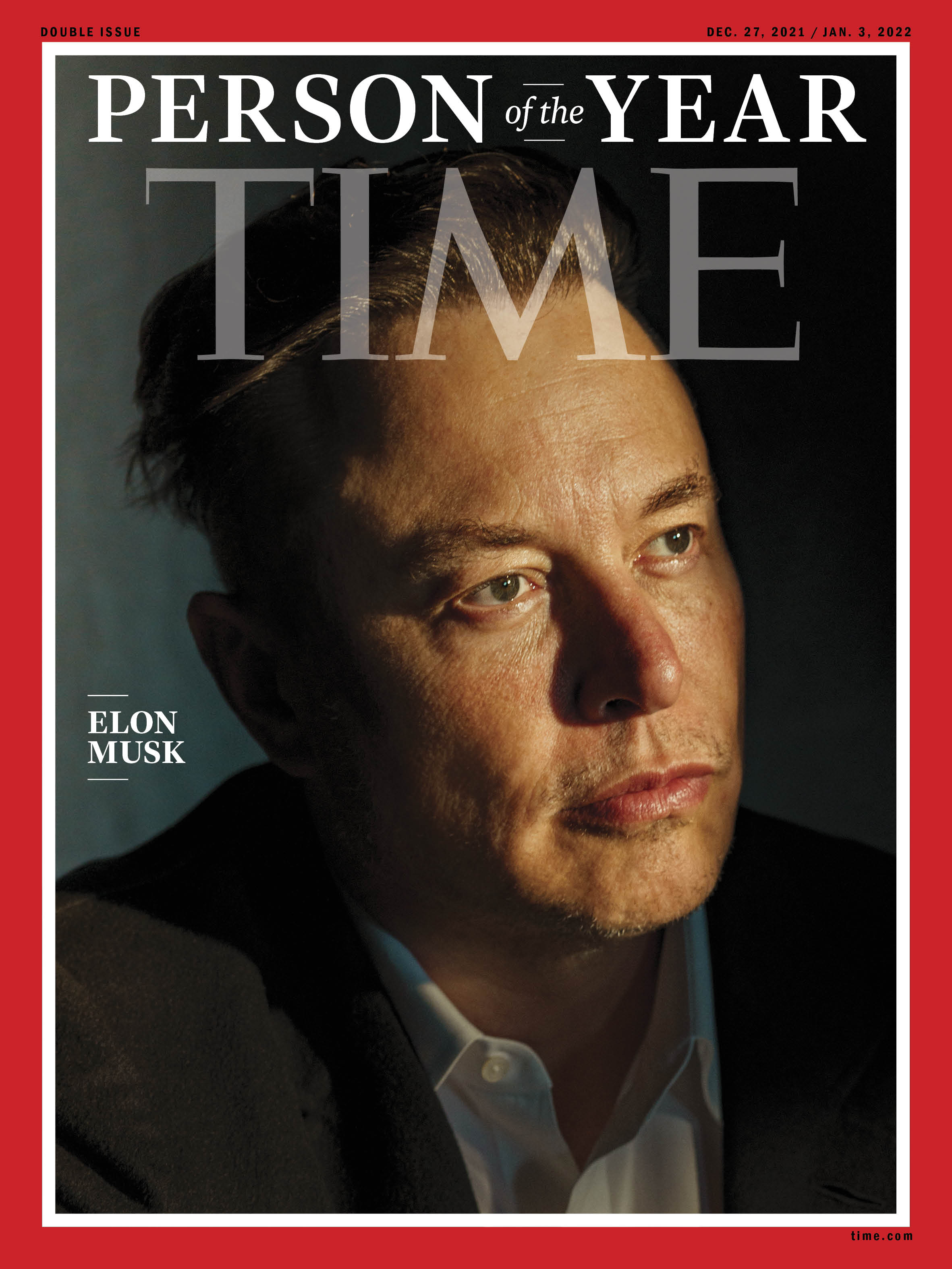
Musk has spent a lifetime defying the haters; now, it seems, he’s finally in position to put them in their place. For 2021 was the year of Elon Unbound. In April, SpaceX won NASA’s exclusive contract to put U.S. astronauts on the moon for the first time since 1972. In May, Musk hosted Saturday Night Live. In October, car-rental giant Hertz announced it planned to add 100,000 Teslas to its fleet. The juvenile missives from his unmistakably phallic Twitter avatar came days after one of his rockets launched NASA’s first antiasteroid planetary-defense test; a few weeks before another launched a first-of-its-kind mission to study cosmic X-rays; and amid Musk’s sale of 10% of his Tesla stock, a process that roiled markets, cost him billions and should produce enough tax revenue to fund the Commerce Department for a year. The sale was prompted by a Twitter poll Musk posted in a fit of pique over liberal Senators’ proposals to tax billionaires.
Many people are described as larger than life, but few deserve it. How many of us truly exceed our life span? How many will make it into the digital textbooks our spacefaring descendants will study? As Shakespeare observed in Julius Caesar, it’s far easier to be remembered for doing evil than doing good. How many will leave a mark on the world—much less the universe—for their contributions rather than their crimes? A few short years ago, Musk was roundly mocked as a crazy con artist on the verge of going broke. Now this shy South African with Asperger’s syndrome, who escaped a brutal childhood and overcame personal tragedy, bends governments and industry to the force of his ambition.
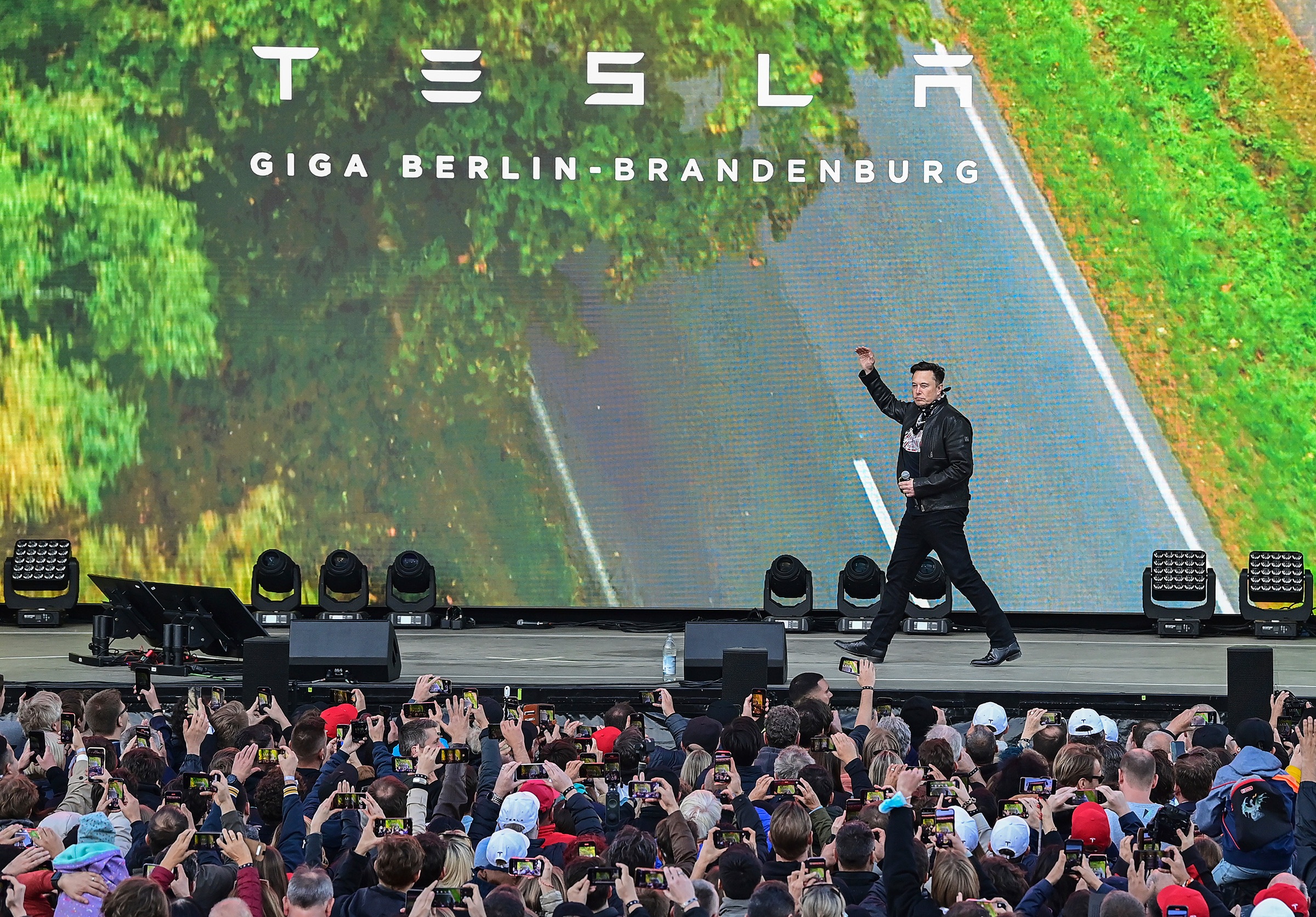
To Musk, his vast fortune is a mere side effect of his ability not just to see but to do things others cannot, in arenas where the stakes are existential. “He was raised in a tough environment and born with a very special brain,” says Antonio Gracias, Musk’s close friend of two decades, who has held seats on the boards of Tesla and SpaceX. “Ninety-nine-point-nine percent of people in that situation don’t come out of it. Some small percentage come out of it with the ability he has to make great decisions under extraordinary pressure and the never-ending drive to change the course of humanity.”
Such cosmic ambition rarely comes without consequences, and Musk still must answer to earthly authorities. His companies have faced allegations of sexual harassment and poor working conditions; in October, a federal jury ordered Tesla to pay $137 million to a Black employee who accused the automaker of ignoring racial abuse. The businesses have also been fined for numerous regulatory violations. The feds are probing Tesla’s Autopilot software, which has been involved in an alarming number of crashes with parked emergency vehicles, resulting in injuries and death. The company’s expansion in China required cozying up to its repressive autocrats.
The toll his hard-driving style takes on staff is legendary. Former associates have described Musk as petty, cruel and petulant, particularly when frustrated or challenged. He recently separated from the experimental musician Grimes, the mother of his seventh son. “He is a savant when it comes to business, but his gift is not empathy with people,” says his brother and business partner Kimbal Musk. During the COVID-19 pandemic, he’s made statements downplaying the virus, broken local health regulations to keep his factories running and amplified skepticism about vaccine safety. Musk tells TIME he and his eligible children are vaccinated and that “the science is unequivocal,” but that he opposes vaccine mandates: “You are taking a risk, but people do risky things all the time,” he says of the unvaccinated. “I believe we’ve got to watch out for the erosion of freedom in America.” The vast expanse of human misery can seem an afterthought to a man with his eyes on Mars.
Musk is easily cast as a hubristic supervillain, lumped in with the tech bros and space playboys, for whom money is scorekeeping and rockets are the ultimate toy. But he’s different: he’s a manufacturing magnate—moving metal, not bytes. His rockets, built from scratch on an autodidact’s mold-breaking vision, have saved taxpayers billions, reinvigorated America’s space dreams and are launching satellites to expand Internet access across the globe. If Tesla delivers on its pledges, it has the potential to strike a major blow against global warming. The man from the future where technology makes all things possible is a throwback to our glorious industrial past, before America stagnated and stopped producing anything but rules, restrictions, limits, obstacles and Facebook.
“He is a humanist—not in the sense of being a nice person, because he isn’t,” says Robert Zubrin, founder of the Mars Society, who met Musk in 2001, when the young, newly minted dot-com millionaire sent a large unsolicited check to the organization. “He wants eternal glory for doing great deeds, and he is an asset to the human race because he defines a great deed as something that is great for humanity. He is greedy for glory. Money to him is a means, not an end. Who today evaluates Thomas Edison on the basis of which of his inventions turned a profit?”
For all his outlier qualities, Musk also embodies the zeitgeist of this liminal age. This was the year we emerged from the hundred-year plague only to find there was no normal to go back to, a year that felt like the cusp of a brave or terrifying new world, with nobody in charge and everything up for renegotiation—from how we work and travel to what we find meaning in and cherish. Musk is our avatar of infinite possibility, our usher to the remade world, where shopworn practices are cast aside and the unprecedented becomes logical, where Earth and humanity can still be saved. Perhaps no one man should have all that power. Perhaps this vision of the greater good comes with a human cost. But if many never voted or signed up for Musk’s wild zero-gravity ride, that is of no consequence to him.
Musk ducks his large frame under the massive steel ring that holds the tallest, most powerful rocket ever designed and peers up at the dozens of engine nozzles that will power it. His fluffy little gray dog, Marvin, follows close behind the heels of his black cowboy boots, which Musk has paired with a black Tom Ford jacket and black jeans. His excited technical patter suddenly goes quiet; he sees something up in the gnarled mass of metal tubes that displeases him. “If one engine catches fire,” he explains, “we want to ensure that fire does not spread through the entire volume.” There are barriers between the engines for this purpose, but he’s not convinced they’re sufficient.
Musk has a soft handshake and an even voice that expresses exasperation, joy and breathtaking ambition in the same quiet register. Tesla may be the principal source of his stupendous wealth and fame, as well as his greatest impact on the planet to date. But it is space that animates his wildest, most extreme ambitions. Musk’s toddler, X Æ A-Xii (pronounced “X”), has recently started saying car, to which his father responds, “Rocket!”
“The goal overall has been to make life multi-planetary and enable humanity to become a spacefaring civilization,” Musk says—not because it would be profitable, but because it would be “exciting,” at least to him. “And the next really big thing is to build a self-sustaining city on Mars and bring the animals and creatures of Earth there. Sort of like a futuristic Noah’s ark. We’ll bring more than two, though—it’s a little weird if there’s only two.”
How Musk can believe something so improbable is easier to understand when you learn just how unlikely his current spacefaring success has been. Before it was America’s passport to the solar system, SpaceX nearly bankrupted Musk. Its first rocket, the Falcon, failed three times before reaching orbit in 2008. The company proceeded to create the Falcon 9 and then the Falcon Heavy, which has three clusters of nine engines. Clustering engines was previously considered a bad idea because of the number of moving parts that can go explosively wrong—one of many assumptions Musk upended. “When I first looked at the clustering of engines on the Falcon 9, I had to roll my eyes,” says Scott Pace, director of George Washington University’s Space Policy Institute. “But that’s why Elon Musk is smarter than me.”

Rockets also weren’t supposed to fly more than once. For decades, spent rocket stages were abandoned to the sea. “No one has ever made a fully reusable orbital rocket of any kind whatsoever,” Musk says. “We just live on a planet where this is an extremely difficult job.” He describes the challenge with evident relish. “It’s like, if this was a video game, the setting is on maximum but not impossible.” In the past six years, SpaceX has successfully landed the first stage of 90 of its Falcon 9 rockets and reflown 72 of them. Musk has yet to achieve full reusability by reflying both rocket stages.
Before Musk, America’s space industry was moribund. In 2011, NASA mothballed the last space shuttle, after inking a deal with SpaceX to make uncrewed cargo resupply runs to the International Space Station (ISS). SpaceX made its first such trip in 2012, two years ahead of the competition, and in 2014, NASA tapped the company and behemoth Boeing to fly crews to the ISS. SpaceX launched its first crew to the ISS aboard a Dragon spacecraft in May 2020. Boeing, delayed by development problems, is not planning even an uncrewed test flight until next year.
For the Dragon, Musk swept away old-school instrument panels and replaced them with three oversize touch screens. There’s no control stick; the spacecraft’s attitude, orbit and re-entry engines are all governed by the screens. Astronaut Doug Hurley, commander of the first crewed Dragon flight, worried the screens would delay reaction times, but SpaceX solved this by making Dragon an automated ship. “There’s no plans to do any more manual flying, certainly on the NASA missions,” Hurley says, “unless there’s a need for it from a systems failure kind of scenario.”
Success has not dampened Musk’s appetite for risk. After being lofted into space by a Falcon Super Heavy, his next rocket, the Starship, will light out for the moon, land there, take off and return to Earth, with no stages expended on the lunar journey. This so-called single-stage-to-orbit model has been the white whale of rocket designers for generations. In test flights, four prototype Starships exploded on landing before a successful test last May. For NASA and most private aerospace companies, a single crash is a setback that can take years to recover from. SpaceX works more like a Silicon Valley startup, where the goal is to fail quickly and iterate. This gets expensive fast. Over Thanksgiving, Musk emailed employees that Starship’s new Raptor engine was facing a “production crisis” that could bankrupt SpaceX if it did not achieve a “Starship flight rate of at least once every two weeks next year.” In a “worst-case situation,” he tells TIME, “bankruptcy is not out of the question, not that it’s likely.” The point, he says, was to remind staff that “we cannot lose our edge or get complacent.”
With its Starlink program, SpaceX hopes to launch a constellation of as many as 42,000 satellites to provide Internet service to the world. But that kind of orbiting swarm wreaks havoc on sky gazing. “Just how much stuff do you want to put up there?” asks Neal Lane, senior fellow in science and technology at Rice University. “The astronomers are appropriately making noise about interfering with their ability to observe.” (Gwynne Shotwell, SpaceX’s president, tells TIME the company is working on the problem.)
In April, NASA selected SpaceX to build the lunar lander for the Artemis program, thanks in part to a lowball $2.9 billion bid. A bid by Jeff Bezos’ Blue Origin came in at more than twice that. Bezos sued, accusing Musk of undercutting the competition. Musk took the opportunity to rub his victory in the face of the world’s second richest man: “If lobbying & lawyers could get u to orbit, Bezos would be on Pluto,” he tweeted. In November, the federal claims court ruled in Musk’s favor.
Sometime in the next month or two, Musk hopes to launch the Starship into orbit for the first time, powered by 33 engines at the base of an enormous, 230-ft. steel tube containing nearly 7.5 million lb. of supercooled liquid fuel. “I think we can do a loop around the moon maybe as soon as 2023,” he says, and land on the moon’s surface within three years.
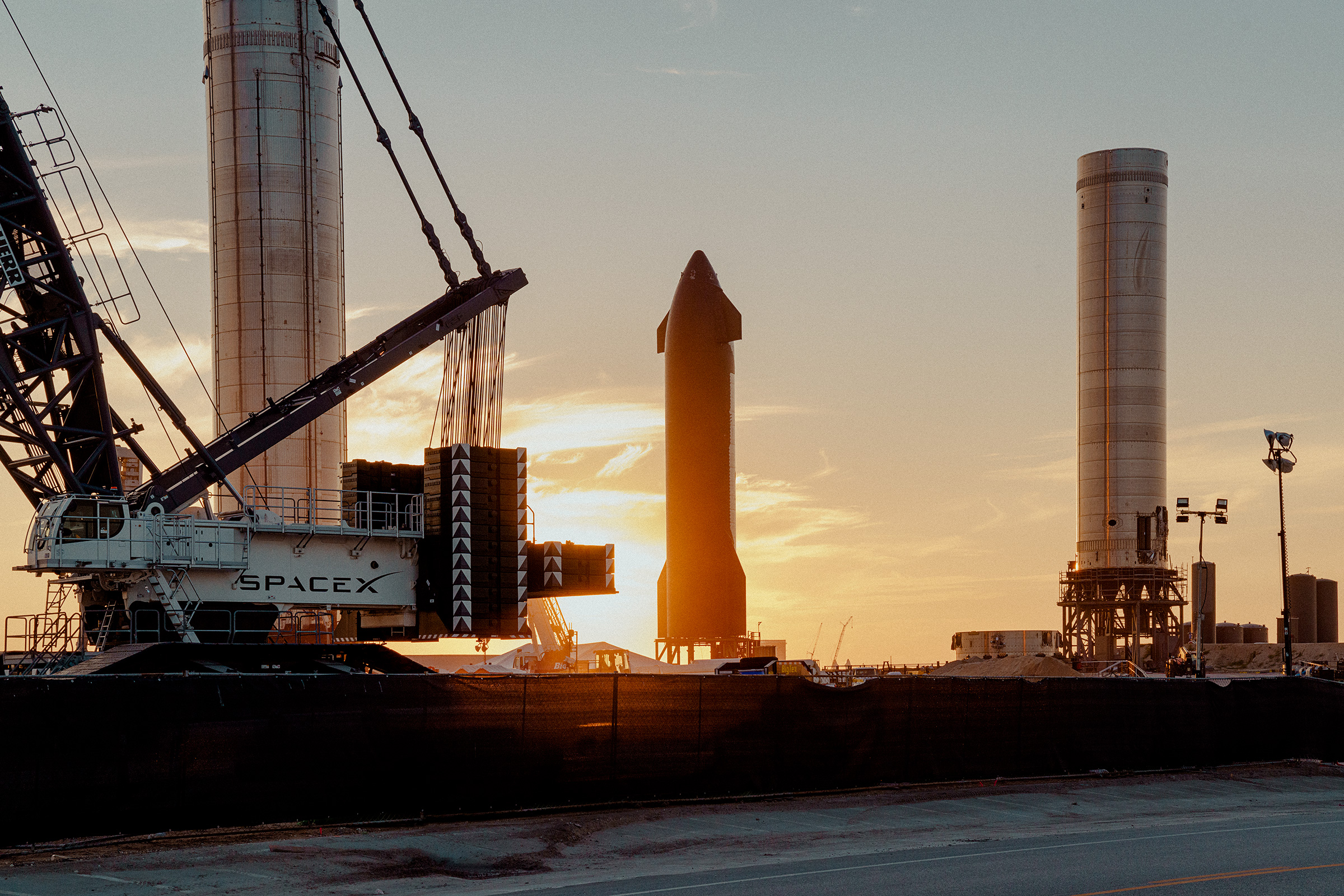
SpaceX is a private company, so whether it’s profitable is not publicly known. (Note: TIME’s co-owners, Marc and Lynne Benioff, have invested in companies connected to space exploration, including SpaceX. They have no involvement in TIME’s editorial decisions.) But that’s not the point, Musk says. One day, he hopes, the rockets will carry 100 people at a time to Mars, where the ships can be refilled with fuel manufactured on the Red Planet and shuttled back to Earth. Asked when he sees this happening, Musk pauses for a long moment, as if calculating all the variables—federal regulations and production schedules, test-flight targets and bathroom requirements. “I’ll be surprised if we’re not landing on Mars within five years,” he finally says.
What will humans do there, and for how long? We have had little use for the moon since landing there 50 years ago. Musk argues that interplanetary life is the next great leap of evolution, like the emergence of multicellular organisms, and also that Mars could provide a home for humanity if Earth becomes uninhabitable. Experts aren’t so sure. “I have real doubts about the viability of a large settlement on Mars,” says John Logsdon, founder of Space Policy Institute. “What would people do there to earn a living? What would be the basis of a Mars economy?”
Musk is not deterred. Gamboling around the concrete slab littered with massive machines of his own creation, Musk acknowledges his latest rocket could go the way of his first three. “I wouldn’t say that our odds of getting to orbit the first time are high,” he says. “I would say optimistically it’s 50%.” The dark surface of the Gulf stretches over his shoulder; cell phones here pick up signals from Mexico, a stone’s throw away. How does it feel to think about the most powerful- rocket ever built exploding in a billion-dollar fireball? “Pretty scary!” he says, grinning. “So, excitement guaranteed on launch day!”
Then the tour is over. Musk turns, whistles to Marvin and strides briskly to his waiting Tesla.
Electric cars, like homemade rockets, were a graveyard of well-intentioned investment before Musk barreled into an industry in which he had no academic training. For decades, legacy automakers had stymied the development of electric vehicles, lobbying against fuel-efficiency standards and filing lawsuits against state mandates to develop the cars. Tesla’s business was sustained in part by generous support from the federal government, though the company got off the ground before it became available. A $465 million federal loan in 2010 helped prop up Tesla at a crucial juncture, and its customers have benefitted from hefty tax incentives.
Musk believed from the start that advances in lithium-ion battery technology made long-range electric vehicles possible. In practice, it wasn’t that easy. Tesla’s first decade was plagued by unmet deadlines, technical snafus and cost overruns. During the 2008 financial crisis, cash was so tight the company came within days of missing payroll. With a dwindling fortune, Musk borrowed $20 million from SpaceX to loan the company, cajoled another $20 million out of investors and raised the price of the company’s debut sports car to survive.
Tesla went public in 2010, but for years it remained in crisis mode. With production behind schedule, and the company at risk of running out of money, Musk spent much of April 2018 sleeping on the factory floor as he tried to iron out assembly-line issues. “He would wake up, look at the monitors on the wall and go chase the constraint,” says Musk’s adviser Omead Afshar, who slept on a cot. “He would be in there reviewing the system, redoing the code himself, solving problems, bouncing from station to station. He will endure the most pain to lead by example, and all of us around him really can’t complain when we’re not working that hard.” For Musk’s 47th birthday that June, he briefly paused for a bite of grocery-store cake, then went back to the paint-shop tunnel.

The cars finally rolled off the line, but soon enough, Musk shot himself in the foot. In August 2018, he tweeted that he had funding to take the company private for $420 a share. The Securities and Exchange Commission sued him, alleging he had committed securities fraud. The resulting settlement cost him his perch as Tesla’s board chair, though he was able to retain the title of CEO. The adult supervision extends only to a point. Three months later, Tesla sent a software update that enabled the car to make farting noises on command. (“Please put ‘invented car fart’ on my gravestone,” Musk tweeted.) But for all the immaturity, his public profile has an upside as well. “We don’t spend any money on advertising,” notes Tesla board chair Robyn Denholm. “His ability to communicate with a very wide range of people globally through social media, I think, has been a huge asset to the company—you know, by and large.” His longtime friend Bill Lee, who finds his memes and trolling “charming,” says he was the one who persuaded Musk to join Twitter. “I remember when he had zero followers,” Lee recalls. “He’s probably the most viral social influencer ever.”
Today, thanks in large part to Musk’s pace-setting, auto companies from VW to Nissan are jostling to invest billions in electric vehicles. Their about-face is driven less by altruism than by a dawning realization that Musk is eating their lunch. “Musk and Tesla forced the change,” says Michelle Krebs, an analyst at Cox Automotive. “He proved that there was a market for EVs.”
That has made Musk arguably the biggest private contributor to the fight against climate change. Had the 800,000 Teslas sold in the last year been gas-powered cars, they would have emitted more than 40 million metric tons of CO₂ over their lifetimes—equivalent to the annual emissions of Finland. But EVs may ultimately be less important to the climate fight than the central innovation that made them possible: batteries. Tesla has repurposed the lightweight, energy-dense cells that power its cars for huge grid-scale batteries that provide essential backup for renewables. Demand for Tesla’s smaller home-based Powerwall, which can store electricity from rooftop solar systems, has spiked as consumers look for alternatives to the grid, driven by everything from February’s Texas power shortage to the fire risk in California that has led to power shutoffs. In some areas, software enables utilities to tap into home-energy reserves when the grid is strained, instead of turning on high-polluting standby generators. Gerry Hawkes, a 72-year-old forester from Woodstock, Vt., has been participating in one such program since 2017, allowing his local utility to draw power from a pair of Tesla backup batteries in his basement. “It makes sense for power backup, and it makes sense for climate change,” Hawkes says.

Some of Musk’s initiatives have generated more controversy. His effort to produce and sell solar roof tiles has stumbled. The Boring Co., which Musk started in 2016, put forward a plan to alleviate urban congestion by building miles of underground tunnels to whisk cars along at more than 100 m.p.h., but critics say plain old subways would be more efficient and equitable. Musk’s move to accept Bitcoin as payment for Teslas this spring prompted accusations of hypocrisy; the cryptocurrency’s computational “mining” operations are a climate disaster, drawing gargantuan amounts of electricity to process transactions. Musk subsequently shelved the plan.
Musk’s January announcement of a $100 million climate prize rankled some environmentalists because of its inclusion of proposals for direct-air carbon capture—giant machines to suck carbon dioxide out of the atmosphere. While some experts say researching that technology is necessary, others see it as a costly distraction. “Direct-air capture is a boondoggle,” says Mark Jacobson, director of Stanford’s Atmosphere/Energy program. “We can’t waste our time and money on things that just don’t work very well.”
Tesla’s hard-charging approach has also raised concerns. In May 2020, Musk reopened his Fremont, Calif., factory against local public-health orders. “It makes you wonder if your life is worth $20 an hour,” an anonymous Tesla worker told SF Weekly. Musk says the regulators were wrong. In March, the National Labor Relations Board ruled that a 2018 Musk tweet had broken labor laws, as did the company’s firing of a union activist. Tesla is appealing the ruling.
This summer, the National Highway Traffic Safety Administration opened a probe into Tesla’s Autopilot system, which has been involved in 11 crashes with parked emergency vehicles since 2018, leaving 17 people injured and one dead. Musk has been accused of overstating and misrepresenting the system’s abilities, starting with the name: despite the promises of an imminent driverless future, Tesla drivers still have to keep their hands on the wheel. “We still obviously have a lot of work to do,” Musk says of truly autonomous vehicles, though he insists the current software is safe. Tesla’s newest autonomous beta software has already been blamed for at least one crash since its broad release in September, and videos showing the cars making dangerous errors have circulated online. A former high-level employee in Tesla’s autonomous-development program tells TIME that the new system’s name, “Full Self-Driving,” is irresponsible.
In 2018, the Chinese government repealed a law against foreign ownership to allow Musk to build a factory in Shanghai. Now Tesla appears to make about half of its cars in China, but it risks losing its hold on the world’s largest car market as the one-party state turns to favor homegrown rivals like NIO and BYD. Musk has faced criticism for pandering to America’s increasingly assertive authoritarian rival. “Overall, Tesla has a good relationship with China,” Musk told a business conference on Dec. 6. “I don’t mean to endorse everything China does.”
Despite supply-chain shortages, Tesla delivered 241,300 vehicles in the most recent quarter, a record for the carmaker. Ford and GM’s combined market cap is less than a fifth of Tesla’s, even though they together sold three and a half times as many vehicles. The Tesla Model 3 became the best-selling vehicle in Europe in September, and the company is swamped by new orders. With demand soaring, Musk is expanding production, preparing to double its output with new factories in Germany and Texas.
Tesla’s gains have inspired investors to pour billions of dollars into EV startups like Rivian and Fisker. One rival, Lucid Motors, is run by a former Tesla engineer who helped create the Model S. The Lucid Air sedan was recently named the MotorTrend Car of the Year. Ford and GM have pumped money into thwarting Tesla’s expansion into pickup trucks, the most profitable segment of the domestic market. But Musk says he isn’t worried about being out-competed. “If somebody makes better cars than we do, and they then sell more cars than we do, I think that’s totally fine,” he says. “Our intent with Tesla was always that we would serve as an example to the car industry and hope that they also make electric cars, so that we can accelerate the transition to sustainable technology.”
Musk’s mother was a model and his father was a monster. Born in Pretoria in 1971, Elon was prone to long silences and speed-reading the encyclopedia. When he was 12, he wrote the code for a video game called Blastar, which he sold to a computer magazine for $500. “He was always different. He was my little genius boy,” his mother, Maye Musk, tells TIME. “From the time he was 3, we used to call him that—Genius Boy.”
His parents divorced when Musk was 8. After the divorce, Elon and brother Kimbal went to live with their father. Errol Musk was a brilliant engineer and entrepreneur; he was also, in Elon’s telling, an “evil” man who tormented the boy psychologically in ways Musk still finds painful to discuss. Errol Musk told Rolling Stone he once shot and killed three armed robbers who broke into his home. In 2017, Errol later acknowledged, he fathered a child with his ex-stepdaughter, 42 years his junior. Musk has said he no longer has contact with his father.
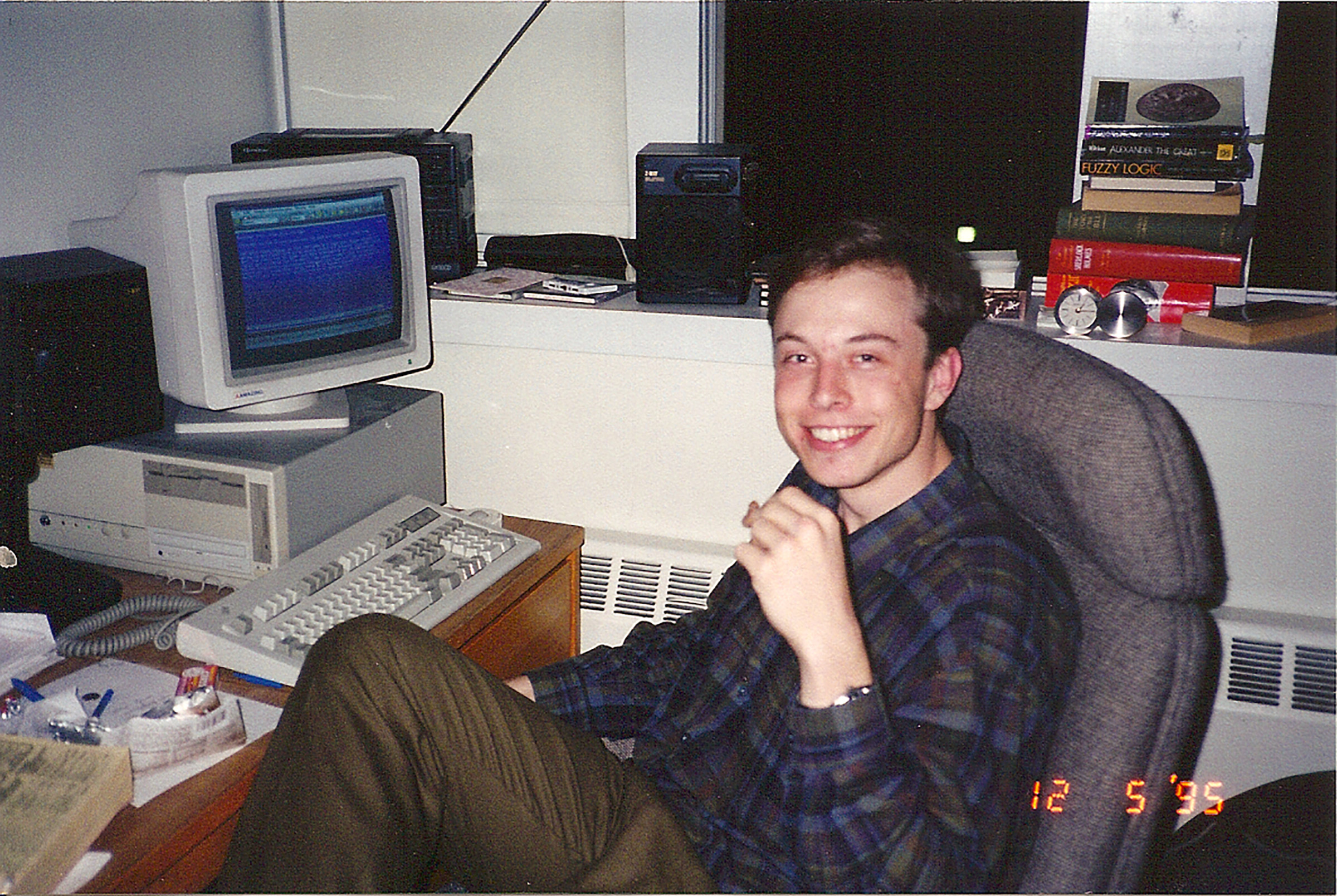
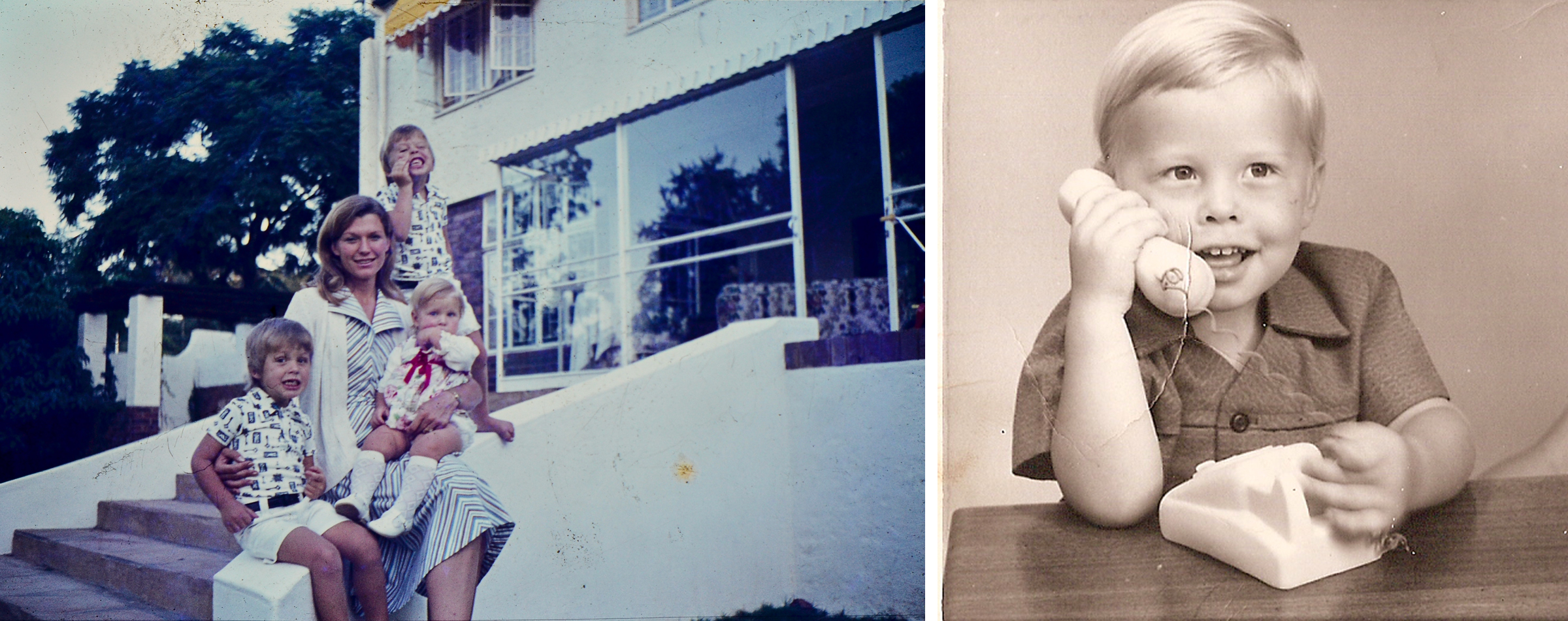
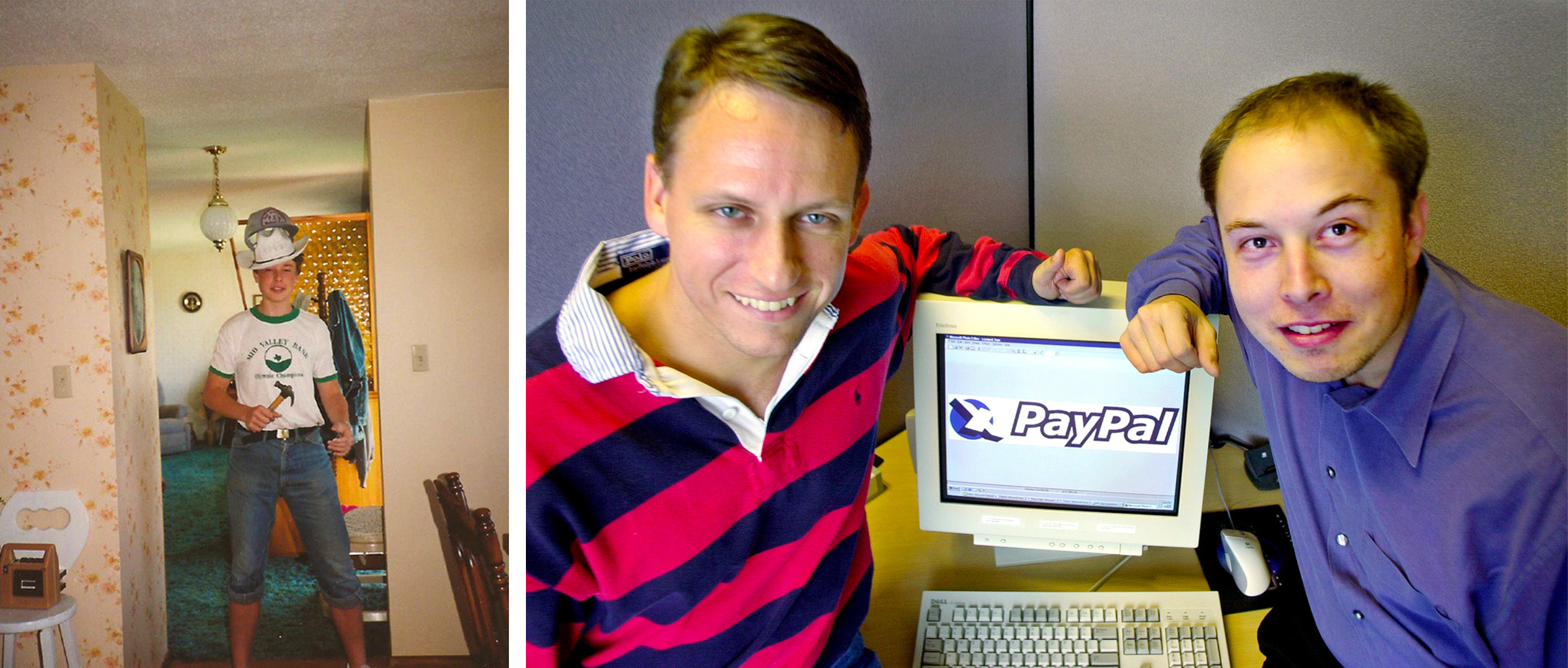

School was nearly as bad as home for the precocious child. Vicious gangs of bullies targeted Musk relentlessly, at one point beating him so badly he was hospitalized, until he hit a growth spurt in high school and started punching back. Musk’s maternal grandfather had moved from Canada to South Africa in 1950, arriving during the early years of apartheid. When Musk was 17, he made the opposite journey, in part to avoid the regime’s military draft. He took off for Canada, enrolling at Queen’s University in Ontario.
Musk later transferred to the University of Pennsylvania, from which he graduated with a double major in physics and economics. Accepted to Stanford University’s Ph.D. program, he moved to California but dropped out after two days. Instead, Elon and Kimbal decided to get in on the nascent Internet boom. They rented a tiny office in Palo Alto, slept on the floor, showered at the YMCA, pirated an Internet line from a neighbor and lived on Jack in the Box. While Kimbal tried to drum up business, Elon wrote code nonstop.
Their first company, Zip2, was the first Internet mapping service, using GPS data to help consumers find businesses in their neighborhood—a precursor to MapQuest. In 1999, Compaq bought the company and Musk netted $22 million for his share. For his next act, Musk decided to reimagine the global banking system. His company, X.com, eventually became part of PayPal, which was purchased by eBay in 2002. Musk came away with about $180 million. But instead of gloating over his payday, Musk still seems irked that these early companies never fulfilled their potential as he saw it. If PayPal had “just executed the product plan I wrote in July 2000,” he told a podcast last year, it could have put the entire banking industry out of business.
At 30, Musk was fabulously rich, but whiling away his days on a yacht didn’t appeal to him. After a severe bout of malaria nearly killed him in 2001, those close to him say, he seemed to feel an urgency to make more of his time on Earth. Around then, he was shocked to discover that NASA had no plans to go to Mars. Zubrin, of the Mars Society, introduced Musk to the community of serious space people, even though he was skeptical of the latest in a parade of rich man-boys with astro fetishes. A globetrotting engineer named Jim Cantrell lent Musk his college rocketry textbooks, which Musk devoured, and agreed to take him to Russia, where Musk hoped to buy an old Soviet intercontinental ballistic missile and turn it into a rocket launcher. “He did not come across as credible,” Cantrell recalls. “It was, ‘Who is this charlatan? This guy’s crazy; he’s not going to make a rocket.’”
After a couple of trips, Musk concluded that the Russians were trying to rip him off—and that their rockets weren’t even very good. He packed up and flew home from Moscow with Cantrell and Mike Griffin, who would go on to serve as NASA administrator under President George W. Bush and undersecretary of defense under President Donald Trump. “Griffin and I are back in coach drinking whiskey, and Mike says, ‘What do you think the idiot savant’s doing up there?’ loud enough for everyone to hear,” Cantrell recalls. “Elon’s sitting in the row ahead of us. And he turns around and says, ‘Hey guys, I think we can build this rocket ourselves. I’ve got a spreadsheet.’ We start looking at the spreadsheet, like, ‘Elon, where did you get this?’ I still use something similar to model a rocket today. He’d just gone and figured it out.”
Around the same time, Musk met a Stanford-trained engineer named JB Straubel, who was trying to turn old Porsches into electric cars. Energy storage had always been the biggest stumbling block—a conventional battery would have to be so big and heavy that the car would expend most of its power hauling its own weight around. Straubel believed recent advances in lithium ion batteries would enable much denser, lighter power cells, if only someone would give him the money to prove it. Most investors he met dismissed him as a crazy gadfly. Musk did the math and concluded on the spot that Straubel was right. A few months later, Musk pledged $6.5 million to a lithium-ion car startup called Tesla, becoming its largest investor and eventually taking it over. “I saw plenty of examples of people that had enormous wealth, and were entirely cautious,” Straubel says. “In Elon, there was this complete opposite mindset.”
Musk had made the incredibly risky decision to plow his fortune into simultaneous startups in industries with high costs, long development timelines and massive barriers to entry. The last successful startup in the American automotive industry, Chrysler, was founded in 1925. “I said, ‘Just choose one: solar or cars or rockets,’” Maye Musk recalls. “Obviously, he didn’t listen.”
By 2008, the scale of the challenge became clear. Tesla had taken deposits of up to $60,000 from over 1,000 EV enthusiasts but had yet to deliver more than a few sample vehicles. An automotive blog was running a regular “Tesla Death Watch” feature. SpaceX had attempted to launch three single-engine Falcon rockets from a remote atoll in the Pacific, and all had exploded. Then the financial crisis hit.
“The world imploded. GM and Chrysler went bankrupt. We did not want Tesla to go bankrupt,” Kimbal Musk recalls. “I remember him calling me in October and asking me if I had any money. I had no money—everything was gone, except for about $1 million I was saving to survive the recession. I wired it to him to put into Tesla. I told him, If everything goes to hell, at least we’ll be in hell together.” Musk scraped together $8 million of his own money to cover payroll one week.
Then, finally, the fourth rocket made a successful launch. And two days before Christmas, NASA made the shocking decision to award SpaceX $1.6 billion for 12 flights to the ISS. “I do sometimes wonder if other people have easier times building businesses, because all our businesses have been really freaking hard,” Kimbal Musk says. “Something about our upbringing makes us constantly want to be on the edge.”
Musk has been known to discuss his emotions as frankly and analytically as he does thrust-to-payload ratios, but he can be remarkably vulnerable in public. “If I’m not in love, if I’m not with a long-term companion, I cannot be happy,” he once confessed. He has cried in several interviews, and announced on Saturday Night Live that he has Asperger’s, an autism-spectrum disorder. Musk uttered this intimate disclosure so awkwardly that many viewers took it as a joke.
His first marriage was to his college sweetheart, Justine Miller, a writer. “I’m the alpha in this relationship,” he told her as the newlyweds danced at their wedding, according to a 2010 essay she wrote in Marie Claire. Tragedy struck two years later, when their 10-week-old son Nevada stopped breathing in his crib. Distraught, the couple began in vitro fertilization treatments, and Justine gave birth to twins and triplets, all of whom are boys. As Justine later told it, Elon abandoned her to tend to his companies as she spiraled into depression inside an L.A. mansion that became a gilded cage. Elon filed for divorce in the spring of 2008, and six weeks later announced his engagement to the British actor Talulah Riley. He and Riley were married, then divorced, then remarried, then divorced again in 2016.
In 2018, Musk began dating the musician Claire Boucher, whose stage name is Grimes. Their son, X, was born in May 2020. This September, the couple announced their relationship had ended. Grimes recently released a new song, “Player of Games”: “Sail away to the cold expanse of space,” she sings. “Even love couldn’t keep you in your place/ But can’t you love me like that?”
Musk explains the split as a matter of logistics. “Grimes and I are, I’d say, probably semi-separated,” Musk tells TIME in Texas. “We weren’t seeing each other that much, and I think this is to some degree a long-term thing, because what she needs to do is mostly in L.A. or touring, and my work is mostly in remote locations like this.” He says they are still good friends and he does not have a new girlfriend. “This place is basically like a technology monastery, you know. There are some women here, but not many. And it’s remote.”
“He would be happier with a partner,” says Kimbal. “But he’s also a very hard person to be partnered with.” Family and friends say Musk is sensitive and can take slights personally—particularly attacks on his wealth and media reports he views as unfair. Having pledged on Twitter this year that he would no longer own a residence, Musk has sold off his seven houses and considers his primary home a rental near the Starbase site in Boca Chica, Texas.
X is with his daddy today in Texas, and a nanny brings the child to Musk between appointments. The toddler has his father’s porcelain skin and a mane of straw-blond hair, shaved on the sides into the same fauxhawk Musk recently adopted. Musk takes him over to a patch of AstroTurf in front of the Starbase employee restaurant (“Astropub”), which has an awning made of rocket flaps. X toddles for a few minutes while Musk watches, arms crossed. Then it’s time to leave, and Marvin departs with Musk while X goes with his nanny.
In the future Musk envisions, no one tells you what to do. Robots perform all the labor, and goods and services are abundant, so people only work because they want to. “There’s, like, plenty for everyone, essentially,” he says. “There’s not necessarily anyone who’s the boss of you. I don’t mean to suggest chaos, but rather that you’re not under anyone’s thumb. So you have the freedom to do whatever you’d like to do, provided it does not cause harm to others.”
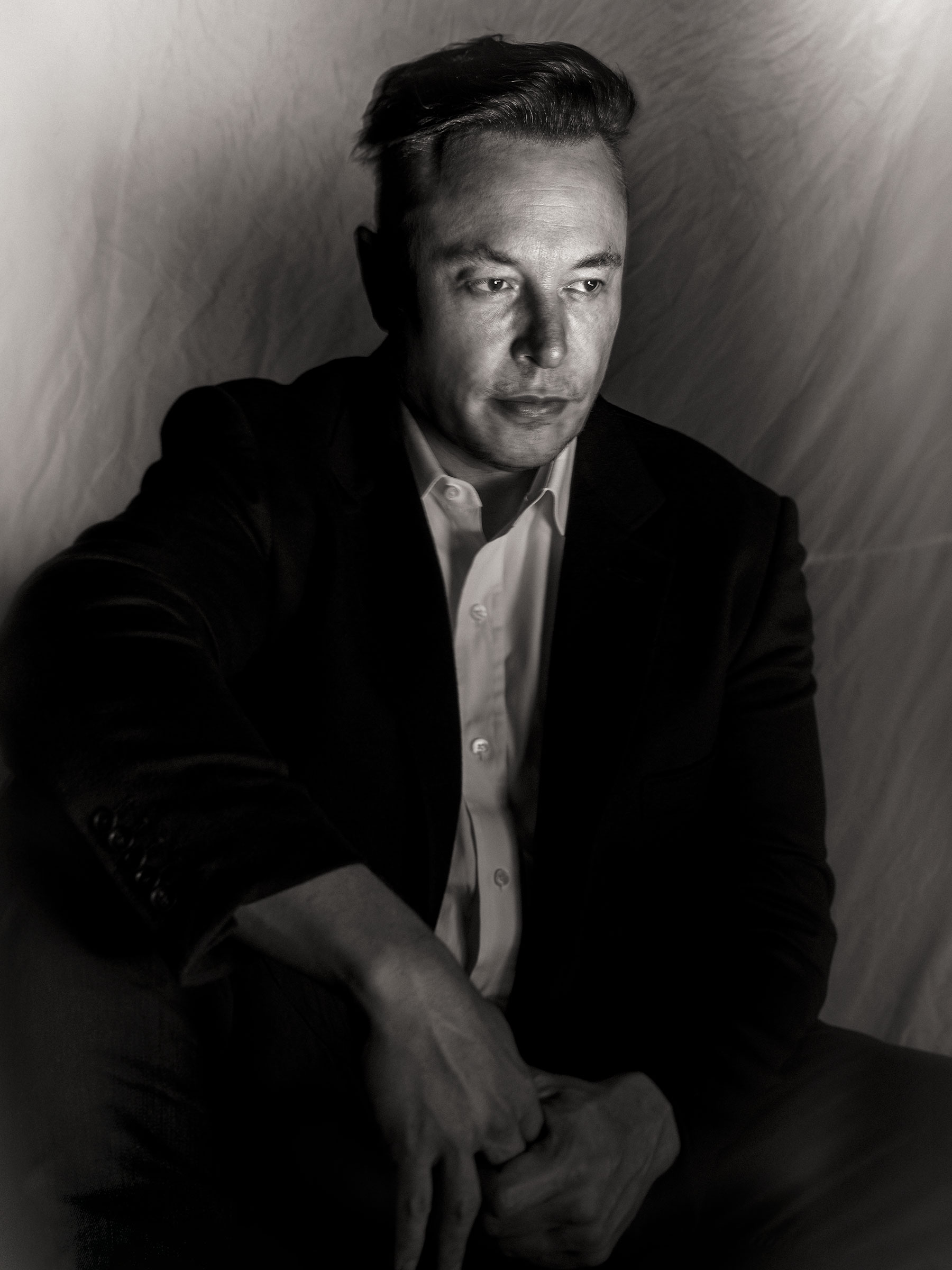
Musk has disavowed terrestrial political affiliations and maintained good relations with politicians of both parties, including Presidents Obama and Trump, though he quit the latter’s business council after only a few months over the decision to pull out of the Paris climate accords. Of President Joe Biden, he says, “I don’t think he’s doing an amazing job, but I don’t know—it’s hard to tell.” He has an ardent following in some of the nastier precincts of the far right, but Musk claims that when he tweeted “Take the red pill” last year, he had no idea that “red-pilling” was a right-wing dog whistle: “I was just referring to The Matrix,” the movie from which the meme derives.
Unlike some techno-libertarians, Musk doesn’t anticipate a grim future of competition for resources in which only the naturally gifted prevail. But he rejects the idea that the size of his fortune constitutes a policy problem in and of itself, or that he is morally obligated to pay some share of it in taxes. A recent ProPublica investigation found that Musk and many others in his tax bracket paid no individual federal taxes as recently as 2018 because they had no income, only assets. In October, Senate Democrats considered imposing a “billionaires’ tax” on wealth. When Democratic Senator Ron Wyden of Oregon tweeted in support of it, Musk responded with a vulgar insult of Wyden’s appearance in his profile photo.
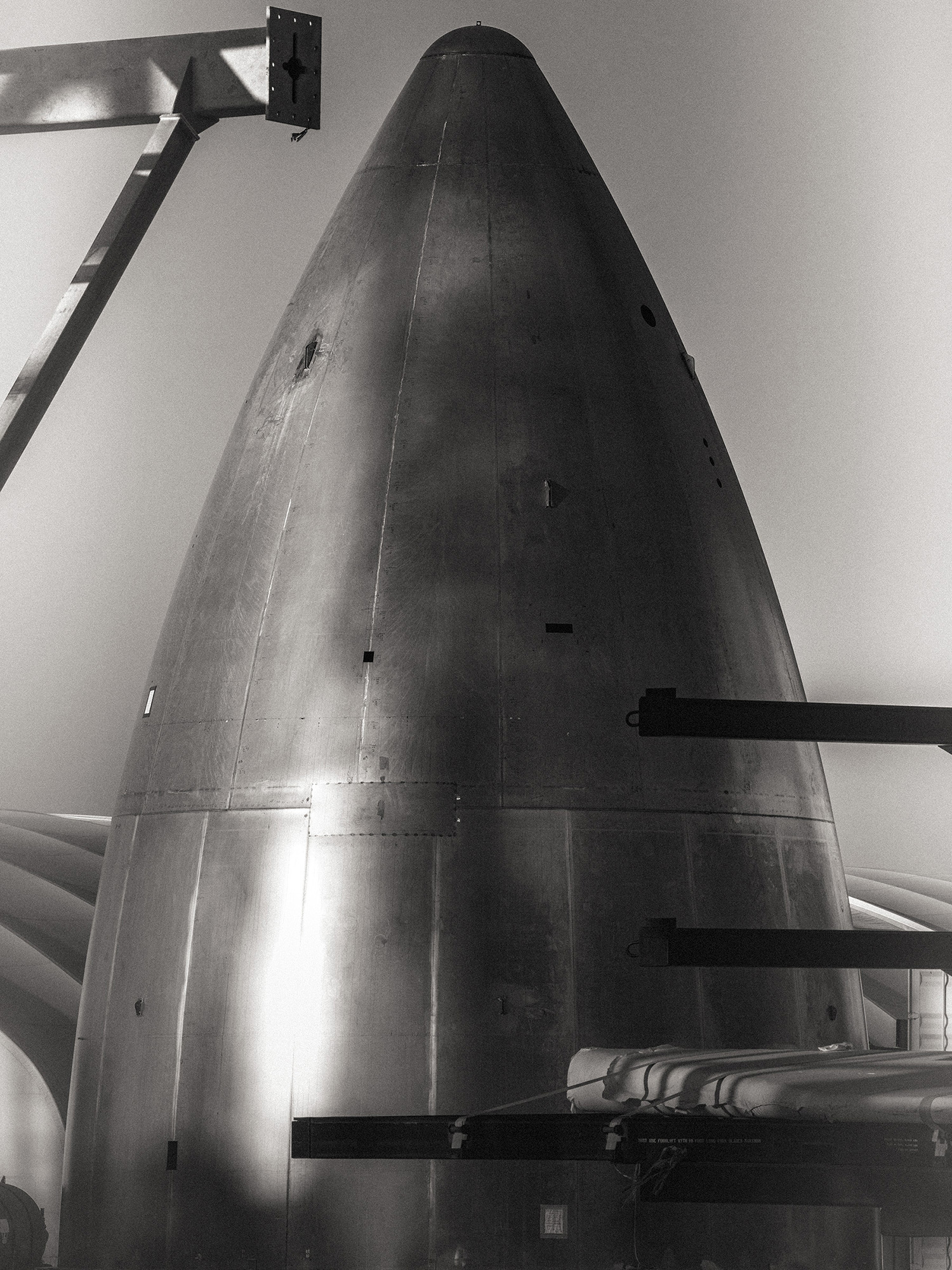
When the topic of government comes up in TIME’s interview, Musk briefly amuses himself by humming rapper Warren G’s ’90s hip-hop hit “Regulate.” “They’re basically saying they want control of the assets,” he says. “This does not result in, actually, the good of the people. You want those who are managing capital to be good stewards of capital. And I think the government is inherently not a good steward of capital.”
In an interview, Wyden agreed with Musk’s interpretation of his position, at least in part: the purpose of such a tax is to take assets out of private hands for public use. Government, he argues, is inherently a more public-spirited and accountable steward of resources than any individual, and is empowered to ensure all of society benefits from the profits a dynamic economy generates. “In this country, I think there is a consensus that we ought to pay for the priorities we really care about, and everyone ought to pay their fair share,” Wyden says.
James Pethokoukis, an economic analyst with the conservative-leaning American Enterprise Institute, thinks Musk does have a coherent politics, whether or not he articulates it. “The reason it’s confusing is it’s not on the traditional left-right spectrum,” he says. “It is a politics of progress.” At a time when segments of the right and left alike champion protectionist populism—from Republican Senator Josh Hawley’s hostility to free trade to Bernie Sanders’ redistributionism—this puts Musk at odds with both. “It is a view that says the solution to man’s problems is growth and technological progress and maximizing human potential,” Pethokoukis says. “It’s not a view fully represented by either side in this country.”
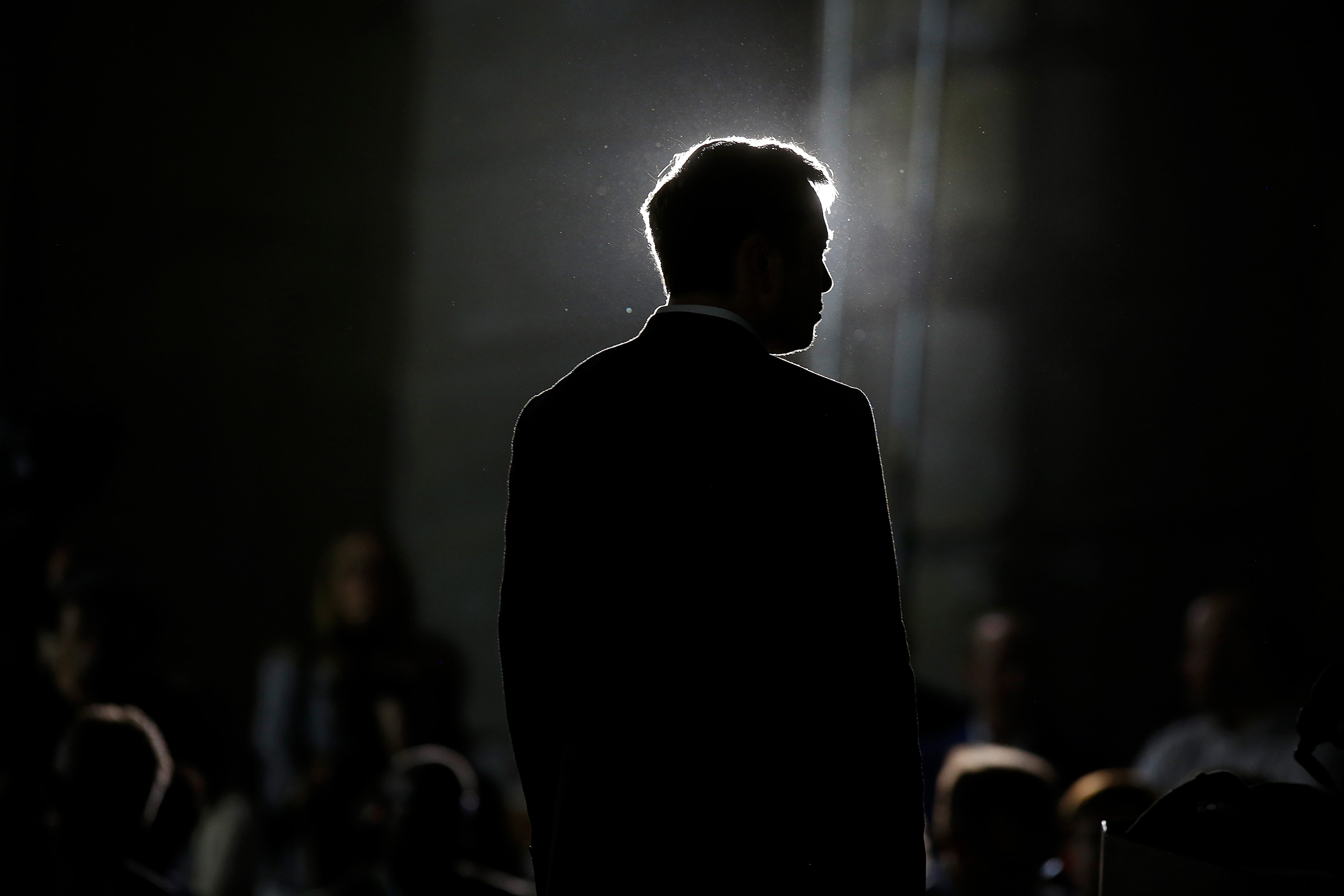
Musk’s belief in progress is not absolute. He has been outspoken about confronting what he sees as the dangers of out-of-control artificial intelligence, and cofounded the AI companies Neuralink and Open AI to advance that goal. He finds cryptocurrency interesting and can talk endlessly about the conception of money as “an information system for resource allocation.” But he doubts that crypto will replace fiat currency, and disavows responsibility for the way his tweets have sent markets into a tizzy. “Markets move themselves all the time,” he says, “based on nothing as far as I can tell. So the statements that I make, are they materially different from random movements of the stock that might happen anyway? I don’t think so.”
Zubrin, of the Mars Society, believes three qualities could fell Musk: his workaholism, his recklessness or a sort of earned hubris. “Great leaders become incapable of hearing criticism,” he says. “Why did Napoleon fail in Russia? Because every time before, he had succeeded. Plenty of French generals were saying, ‘Why don’t we just take Poland and be good?’ But every time in the past, the people who urged caution had been wrong.”
Nevertheless, Zubrin would not bet against his old friend. “Genius is a word that is frequently associated with Musk; wisdom is not,” he says wryly. “But there is one sense in which Musk, in my view, is very wise, which is that he understands that he doesn’t have forever.”
In other words: Get in, loser. We’re going to Mars. —With reporting by Mariah Espada, Nik Popli and Julia Zorthian
Correction, Dec. 14, 2021
The original version of this story misstated Elon Musk’s age when his parents divorced. He was 8, not 9.